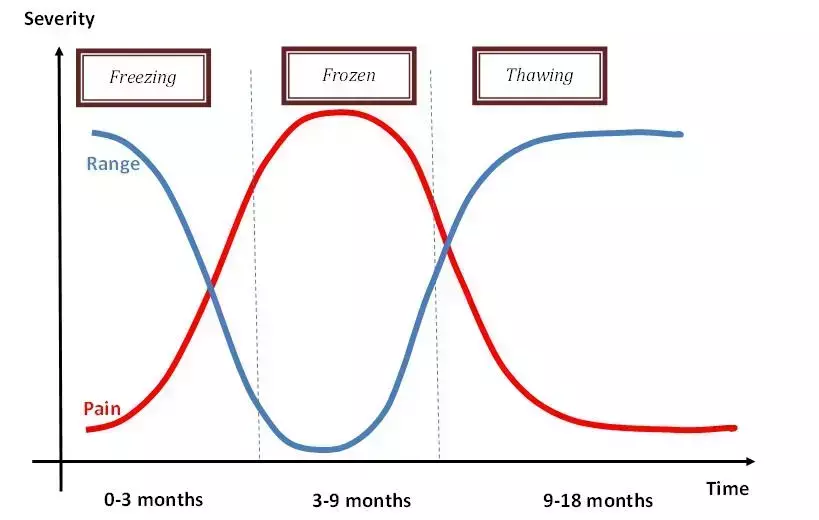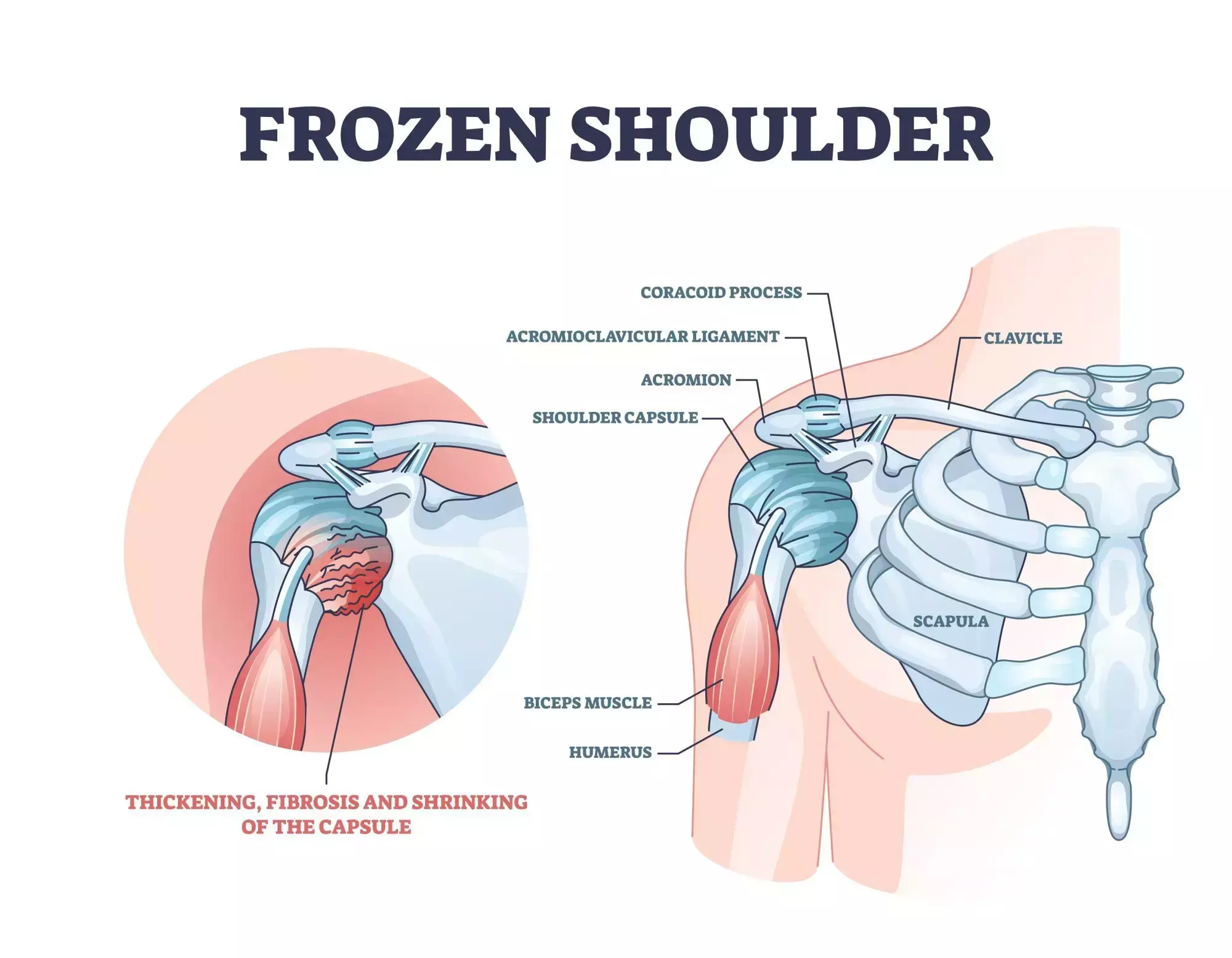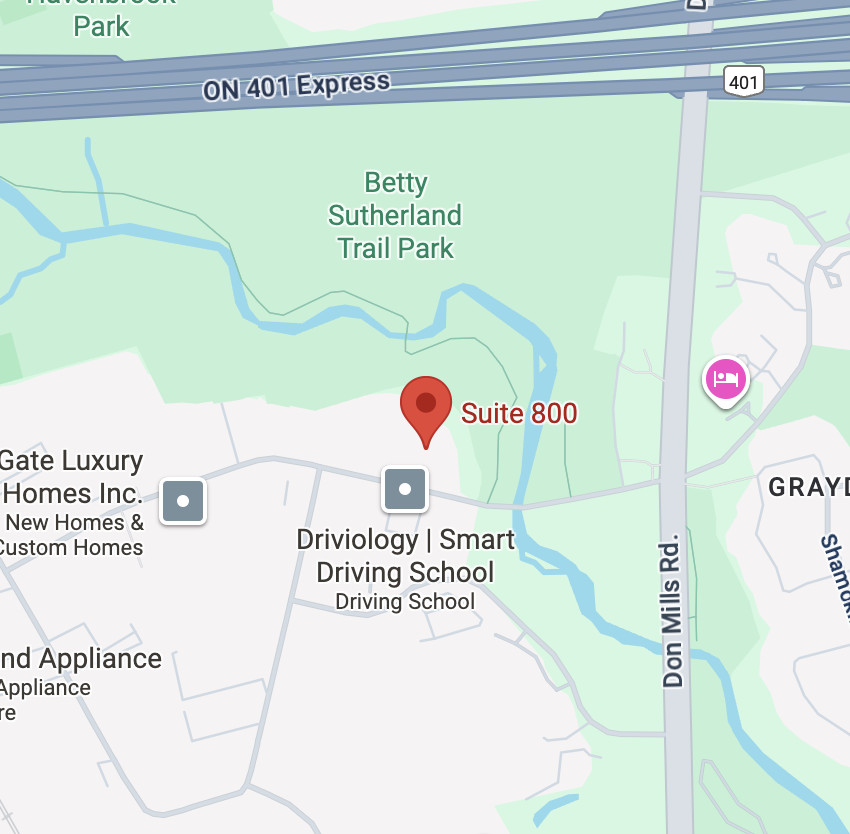Understanding Adhesive Capsulitis
Adhesive capsulitis, also known as frozen shoulder, is an interesting medical condition. The cause is unknown, and the only joint that this occurs in the body is the shoulder joint. There is usually an insidious onset, meaning there is no mechanism of injury or direct cause. The symptoms seem to appear out of the blue. However, there are risk factors that may predispose one to this condition:
Risk factors:
- Post-surgery
- Idiopathic
- Post-trauma
- Prolonged immobilization
- Diabetes
- Thyroid Disorders
- Atherosclerotic Diseases
- Cervical Disc Diseases
- Rotator Cuff/Impingement Induced stiffness
- Individuals aged 40-60 years old
- Sex (Women are affected more commonly than men)
Patterns and Categories of Frozen Shoulder Development
Frozen shoulder typically only affects one shoulder, but it is possible to develop in the opposite shoulder, although it is extremely rare to happen concurrently. Currently there is no clear evidence of whether it is more likely to develop in the dominant versus non-dominant arm.
Frozen shoulder can further be divided into two categories, depending on the cause:
- Primary Adhesive Capsulitis: occurs without an identifiable cause
- Secondary Adhesive Capsulitis: it is triggered by an event (e.g. trauma or surgery) or a disease
Stages and symptoms

Freezing or Inflammatory/Reactive Stage
The classic sign of frozen shoulder is the inability to move the arm, with or without help, as well as shoulder pain. The pain slowly increases in intensity in the initial phase (aka freezing or inflammatory/reactive stage), but decreases in the later phases of the condition. The pain is often described as diffuse and achy, and can sometimes travel down the arm and into the hand. Pain can be present at rest and it can also affect the ability to sleep. This initial stage can last for 6 weeks to 9 months. As the pain increases with time, range of motion decreases. The range most people notice they lose is lifting the arm up/out, reaching up the back, and rotating the arm outwards, although range is limited in all directions.
Frozen (Adhesive) Stage
Eventually the range of motion becomes static, as the shoulder is now considered to be in the frozen (adhesive) stage. This phase may last 4-6 months and during this phase the pain may start to decrease, however the range of motion is most limited. This makes activities of daily living quite challenging, such as getting dressed or reaching into a cupboard. Unfortunately, there is no way of predicting how long each phase will last. Due to these long periods of decreased range of motion, the shoulder muscles can start to weaken from the inactivity.
Thawing Stage
In the final phase, the shoulder begins to thaw (aka recovery phase). This stage can last 6 months or more. It is during this phase that range of motion and strength are regained, and pain continues to lessen. This is the stage when physiotherapy is most beneficial, although there is a role for physiotherapy during each phase.
What actually happens to the tissues with frozen shoulder?

Surrounding the shoulder joint is a capsule, which is the deepest layer of soft tissue and acts as a cover for the shoulder joint. Its function is to keep the lubrication fluid within the joint and to help support the joint. With frozen shoulder the joint capsule becomes inflamed, causing the shoulder ligaments to swell and thicken, which results in scar tissue or adhesions. This results in less room for your shoulder to rotate in the socket, resulting in decreased range of motion and pain.
Diagnosis and Treatment
If you think you have frozen shoulder, it is best to seek medical advice to confirm this diagnosis. Physiotherapy is also beneficial for frozen shoulder as your therapist will provide you with exercises to perform during each stage of this condition, provide hands-on treatment to help maintain/restore joint range of motion, and apply modalities as needed for managing the pain (e.g. acupuncture, ultrasound, TENS). It should be noted that if treatment is not sought, range of motion may not return to full and that muscle weaknesses and imbalances can remain, which can predispose one to future injuries.


